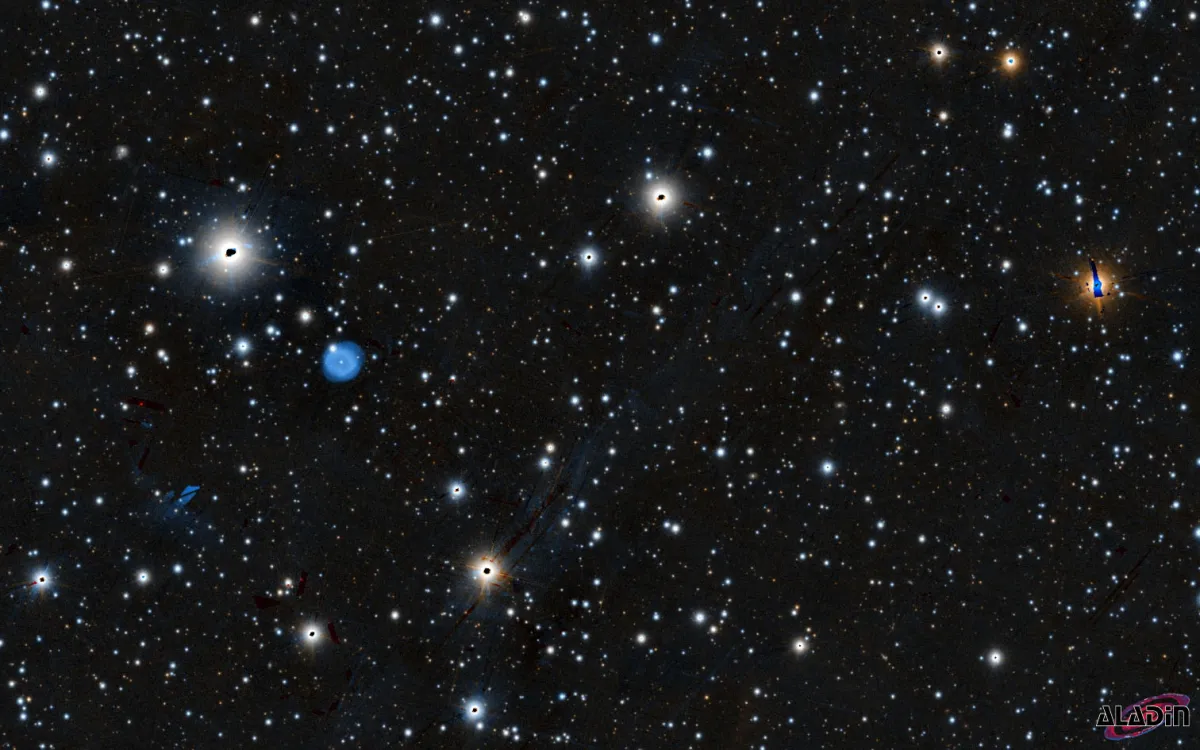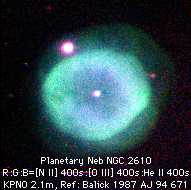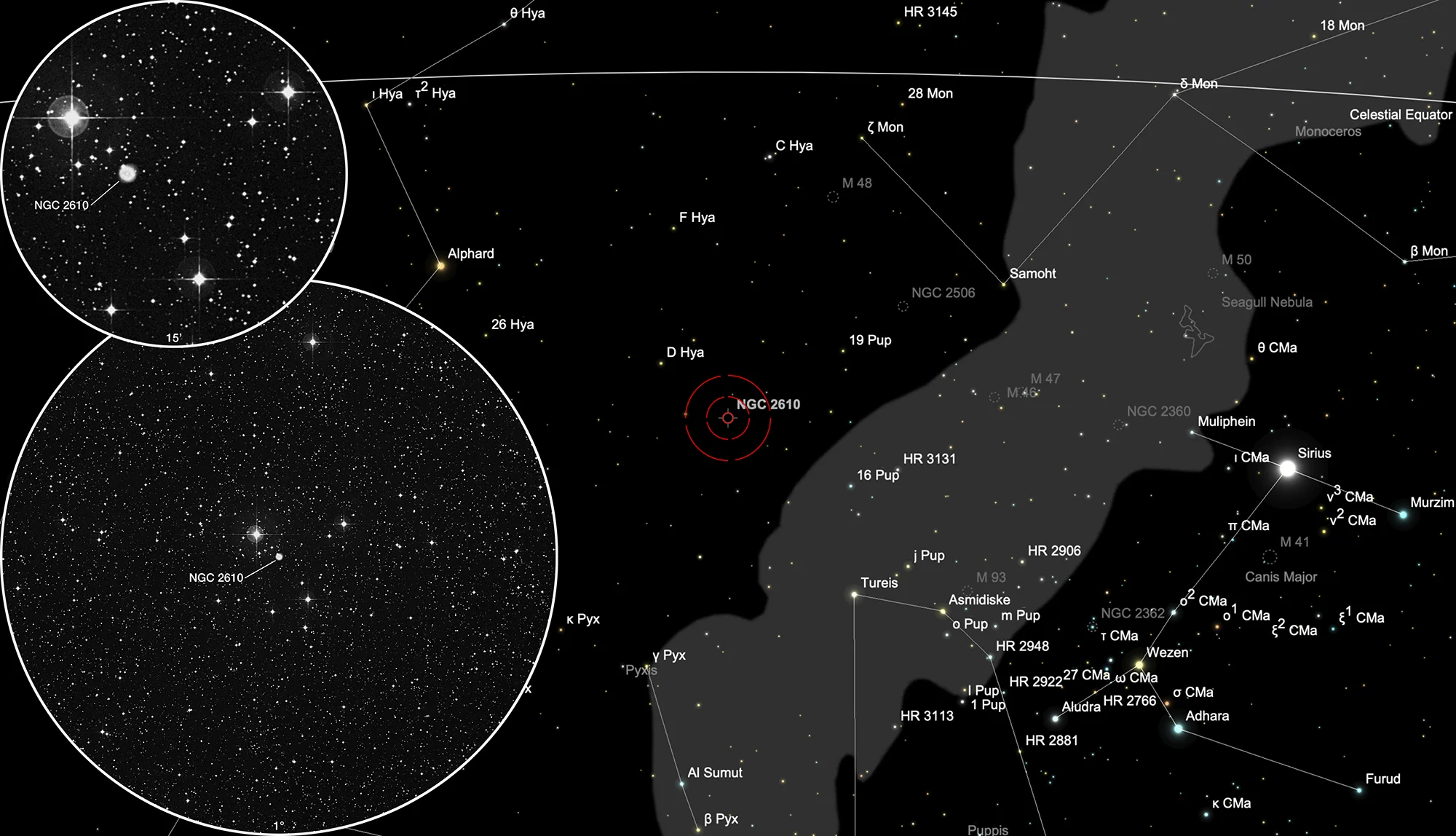Planetary Nebula NGC 2610

History
On 31 December 1785 the German-British astronomer William Herschel saw an object in his 18.7 inch telescope that he classified in group IV (planetary nebulae, stars with burs, with milky chevelure, with short rays, remarkable shapes, etc.) as IV 35 and he noted: «A small star with a brush south preceding, faint, small.» [464]
John Herschel cataloged it in 1833 in his Slough catalogue as h 513 and noted: «A star 14 mag with a fan-shaped brush 15" length to the south preceding side; the brus however judged by both Mr. Dunlop (who saw it) and myself not to be in contact. A bright star 6.7 mag north following.» [466]
Lord Rosse (or more likely one of his assistants) observed the object on 30 November 1850 through the giant 72 inch «Leviathan of Birr Castle» and noted: «Small star in its north following edge, perhaps not connected with the nebu.a The nebula had a brush-like appearance.» On 1 February 1851 it was noted: «Dark space following the star between nebula and star, like the 'snowdrop' nebula [h 399, NGC 2261].» [486]
In 1914 the mysterious object was identified as a planetary nebula by John Henry Reynolds. [141]

Physical Properties
According to Gaia DR3 the distance to the planetary nebula NGC 2610 is 11.5 kpc. The superimposed star on the northeastern edge is in a distance of 690 pc. [147] According to other sources the distance to NGC 2610 is just 2.2 kpc, which appears to be more likely. Distances to planetary nebula are often quite uncertain. Magnitudes through different spectral filters: B 9.02, R 11.23, J 16.705, H 16.293. [145]
| Designations | PN G239.6+13.9: NGC 2610, PK 239+13.1, ARO 64, Sa 2- 27, VV 48, VV' 77 |
| Right Ascension (J2000.0) | 08h 33m 23s |
| Declination (J2000.0) | -16° 08' 56" |
| Dimensions | 38." (optical), 49." (radio) |
| Radial Velocity | +89.0 ± 3.0 km/s |
| Expansion Velocity | 14.0 (O-III) km/s |
| C-Star Designations | AG82 104 |
| C-Star Magnitude | B: 15.60, V: 15.90 |
| Discoverer | REYNOLDS 1914 |
Finder Chart
The planetary nebula NGC 2610 can be found in the western part of the constellation Hydra, circa 22° south of its head. The PN is in a conspicuous triangle of stars of 6.5 to 8 mag. The best viewing time is October to July, when it is close to the meridian at night and highest in the sky.
